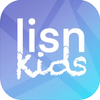Gentle Morning Routines for Kids with ADHD: How to Start the Day with Less Stress
Why Morning Routines Are So Hard — and So Important
If your child has ADHD, you probably already know that mornings can feel like mini battlefields. You’re juggling time, emotions, and the pressure of being “on schedule,” all while trying to keep things calm for a child who wakes up with their own internal chaos. You’re not alone — and no, you’re not doing anything wrong.
Children with ADHD often struggle with executive functioning, making tasks like getting dressed, brushing teeth, and eating breakfast far more challenging than they appear. Add in sensory sensitivities and trouble transitioning between activities, and it becomes clear why mornings can set the tone for the entire day.
The Power of Predictability and Connection
One of the simplest — yet most powerful — ways to support your child in the morning is by creating a predictable, emotionally safe routine. Routines offer a sense of security, something many children with ADHD crave even if they resist it at first. But more than that, they offer repeated chances for success — and those micro-successes stack up over time, slowly building confidence.
This doesn’t mean every moment must be scheduled down to the minute. Instead, think of the morning in “chunks”: wake-up time, bathroom time, dressing time, eating time, transitioning out the door. Within each chunk, create consistent, repeatable micro-routines that your child helps design. Participating in the process builds ownership — which builds cooperation.
Making Transitions Less Painful
Mornings are stuffed with transitions, which are notoriously tough for children with ADHD. Going from the cozy safety of bed to a brightly lit bathroom, or from eating breakfast to putting on shoes, can be surprisingly stressful for a neurodivergent mind. Helping your child shift between activities can make a big difference in your morning rhythm.
One approach involves rehearsing transitions ahead of time—like practicing the morning routine after dinner, when there's less time pressure. Another is using gentle sensory signals: a soft bell, a specific song, or even a short, familiar audio story as a cue that it’s time to move on.
When Audiobooks Become Your Morning Ally
Incorporating audio into your morning routine may sound simple, but its effects can be profound. Many families find that a calm audiobook or audio story helps anchor kids during transitional moments, reducing anxiety and helping them stay on track without the need for constant verbal reminders.
For example, if your child resists brushing their teeth or getting dressed, playing an engaging story right before or during these tasks can turn resistance into curiosity. Using kid-centered audio content — not just background noise — can help ground their attention, inspire imagination, and smooth mood fluctuations.
The iOS or Android app LISN Kids offers original audiobooks and audio series designed specifically for children aged 3 to 12. It blends storytelling with gentle emotional regulation, supporting attention and imagination without overstimulation — a perfect pairing for those groggy early hours.

Accepting What Can’t Be Rushed
One of the most compassionate shifts we can make as parents is letting go of the idea that mornings must be fast and flawless. If your child takes longer to get dressed than their sibling, or needs five reminders to put on socks, it doesn’t mean you’re failing them — it means they’re learning skills at their own pace.
Try observing which moments tend to trigger stress each morning. Is it waking up? The noise of the kitchen? Transitions? Once you know the stress-points, you can make small adjustments to either soften or restructure that part of the routine. This could mean dimming lights, offering a warm drink before talking, or allowing quiet audio time before breakfast. These solutions are not "cheats"—they’re accommodations that meet your child’s brain where it is.
If you’re looking for ways to foster calm after the school day too, you might also explore suggestions in this article about creating a calm bubble after school.
What Might Work for Your Family
Families often benefit from experimenting. Here are some gentle ideas to consider, depending on your child’s temperament and sensory profile:
- Create a visual schedule: Pictures or icons representing each task can help kids visualize their morning without relying on verbal instructions.
- Gamify repetitive tasks: Set mini “challenges” like “Beat the clock to get socks on” (as long as this energizes rather than stresses your child).
- Use gentle audio cues: A 2-minute upbeat track might signal “time to brush,” transitioning later to a slow story for “quiet coat time.”
- Keep expectations realistic: Focus on one routine change at a time and celebrate progress, not perfection.
Don’t underestimate the value of imagination in motivating children. Activities like personalized audio storytelling can reframe tedious tasks into playful moments of connection — even if they’re only two minutes long. And while developing auditory memory may feel like an unrelated skill, strengthening your child’s auditory memory during calm morning rituals can ripple into their school readiness and emotional regulation through the day.
Every Morning Is a New Beginning
It’s okay to start over — every morning offers a chance to reset. On the tough days, remind yourself that your love, your patience (even when it runs thin), and your gentle persistence are making a difference, even if it’s not always visible yet.
Children with ADHD often march to their own rhythm and pace — your job isn’t to force them into another time signature, but to find ways of moving in sync. With time, thoughtful routines, and a little help from supportive tools and stories, a calmer morning may feel not only possible, but sustainable.
Need inspiration for mindful listening habits? This article shares how audio content can enhance calm and focus for kids with ADHD.
